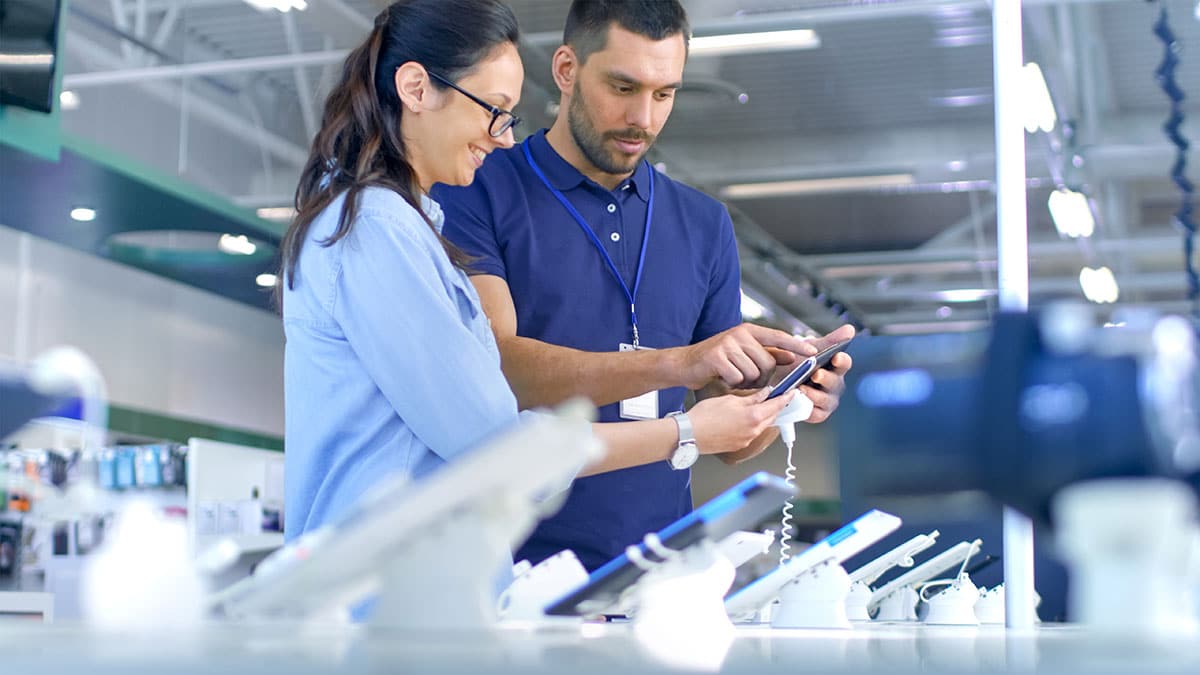Why experience design is the future of retail CX
Published on Jul 10, 2025

Retail brands have traditionally focused on what happens at checkout, including processing sales, handling returns, and collecting feedback. But by the time those interactions happen, the experience is already in motion.
Today’s shoppers expect more. In fact, 36% expect businesses to provide personalized recommendations or experiences based on their shopping behavior. A customer’s perception of a brand is shaped well before they reach the register or complete a transaction online. It’s influenced by what they see, how easy it is to find, and how supported they feel along the way.
This is where experience design comes in.
Instead of reacting to what’s already happened, experience design shapes the decisions that influence every part of the customer journey before it even begins.
What is experience design in retail?
Experience design is how experience management (XM) becomes proactive. It’s the strategic layer that shapes:
- What products are featured and how they’re merchandised
- How pricing, offers, and promotions are planned and delivered
- The layout and flow of the store environment
- How digital channels guide discovery, purchase, and support
- The tone and consistency of employee training and service
- How loyalty programs are structured to drive repeat visits
These are all high-impact decisions that define the customer experience, and they’re made well before the sale.
Go beyond tracking satisfaction. Start designing for it!
Many retailers still lean heavily on post-purchase surveys, mystery shops, and return data to gauge customer experience. While that information provides valuable feedback and helps track performance trends, it only tells part of the story.
To really elevate the retail experience, brands need to design with intention from the start. That means creating consistent, seamless interactions that feel effortless to customers and empowering for employees.
Why experience design is becoming a must in retail
Shopping habits are evolving fast, and expectations are rising even faster. Consumers now demand seamless, personalized interactions—and they’re less patient than ever with friction in the journey. In one study, 71% of consumers said they expect companies to deliver personalized experiences, and 76% reported feeling frustrated when that doesn’t happen. On top of that, 66% say they’re likely to switch brands if they feel treated like a number instead of an individual.
Expectations don’t stop there. 64% want companies to respond and interact in real time, and 59% expect businesses to anticipate their needs and offer relevant suggestions before they even reach out. In today’s landscape, it’s not just about reacting quickly.
It’s about being one step ahead.
What’s standing in the way of great retail experiences?
Today’s retail environment is shaped by a few persistent challenges:
- Shoppers are increasingly intolerant of delays, confusion, or friction in-store and online
- Expectations for personalization are higher, especially among younger consumers
- Product discovery must be fast, intuitive, and consistent across channels
- Brand loyalty is fragile, especially when service or convenience falls short
- Store teams need better tools and workflows to meet rising service expectations
Addressing these challenges through experience design isn’t just a fix, it’s a competitive advantage. When retailers design with intention, they create experiences that feel effortless for customers, empower employees, and ultimately drive stronger loyalty, satisfaction, and performance across the board.
It's how leading retailers stay ahead of shifting expectations and set themselves apart in a crowded market.
Co-create smarter retail experiences with always-on communities
Want to know what shoppers actually think about your product assortment, store layout, pricing strategy, or app features? Don’t wait until after launch. Ask them early and often.
Always-on communities give retail brands a direct, real-time connection to customers and frontline employees. This constant feedback loop lets you test ideas, refine decisions, and co-create experiences that align with real needs and preferences.
Communities offer deeper insights than traditional surveys. They give you quick, real feedback you can use to design everything, from store signage and loyalty programs to product packaging and digital experiences in partnership with your audience.
And it works. A study found that 8 in 10 consumers are more likely to purchase new products or services when they’re part of an online brand community. In fact, 74% say being part of that community also makes them more likely to write reviews. When shoppers help shape the experience, they’re more likely to support it and advocate for it.
How community insight fuels personalization at scale
Personalization also plays a huge role in creating a retail experience that feels both relevant and human, but doing it well requires more than guesswork. That’s where experience design, powered by community input, becomes essential.
Community insight gives retailers a direct line to real shoppers across different segments, helping uncover specific preferences, behaviors, and expectations. Whether it’s understanding how different generations prefer to browse in-store or what features loyalty members want in a rewards program, these conversations offer insights that go far beyond general survey data. By designing experiences with these inputs, whether it’s product recommendations, store messaging, or digital flows, retailers can deliver personalization that resonates.
And it pays off. Eighty-eight percent of online shoppers, including 96% of Gen Z and 97% of millennials, are more likely to keep shopping on a retailer’s site when it offers personalized experiences. Plus, faster-growing companies generate 40% more of their revenue from personalization compared to their slower-growing peers. The takeaway? True personalization starts with understanding your audience, and communities help you do just that.
It all starts with the right voices, involved at the right moments, guiding the design from the ground up.
The future of retail experience design: Where brand, shopper, and employee input come together
Experience design in retail isn’t just about launching better promotions or improving one-off campaigns. It’s about staying deeply connected to your customers and teams as behaviors shift, preferences evolve, and competition grows.
Designing with intention means every element, from shelf layout to service scripts to mobile UX, reflects what your shoppers truly value. It also means supporting your employees with tools and workflows that make the experience smoother on both sides of the counter.
Designed to connect, built to last
Retail success isn’t just about stocking shelves or launching the next promotion. It’s about creating meaningful, consistent experiences that meet evolving shopper expectations.
Rather than waiting for feedback to tell you what went wrong, experience design helps you get it right from the beginning. It’s a shift in mindset: from reacting to refining and from guesswork to insight-driven strategy.
When you design with intention, every detail works together to create something memorable and effective.
Looking to build lasting loyalty and real differentiation in a crowded market? It starts by designing retail experiences that feel as good as they function. Connect with us to get started.
Related articles

Key Strategies to Create Personalized In-Store Experiences
Customers now expect personalized digital experiences that are aligned with visiting brick and mortar locations. Here is how to maintain consistency.

Why a personalized customer experience is the key to business success
In today's relentless business landscape, personalization in customer experience (CX) has evolved from a luxury to a vital necessity. In fact, 81% of customers prefer companies that offer a personaliz

Experience design for consumer services: From first touch to lasting impact
Experience design is crucial in the consumer services space. Learn how personalization, always-on communities, and proactive strategies drive loyalty, satisfaction, and growth.